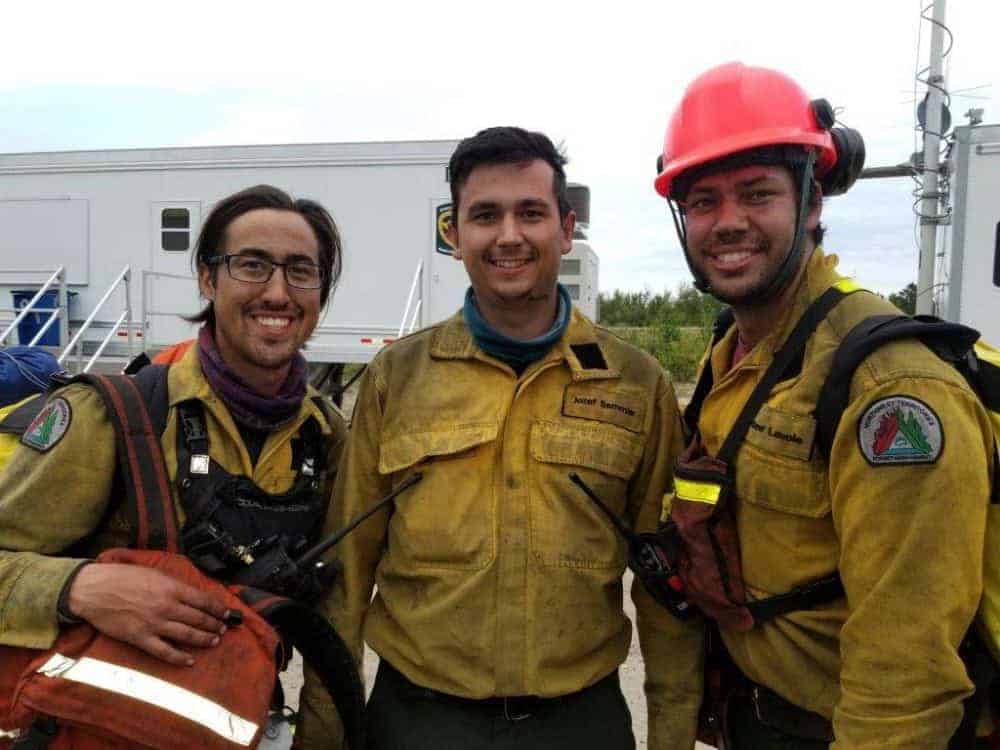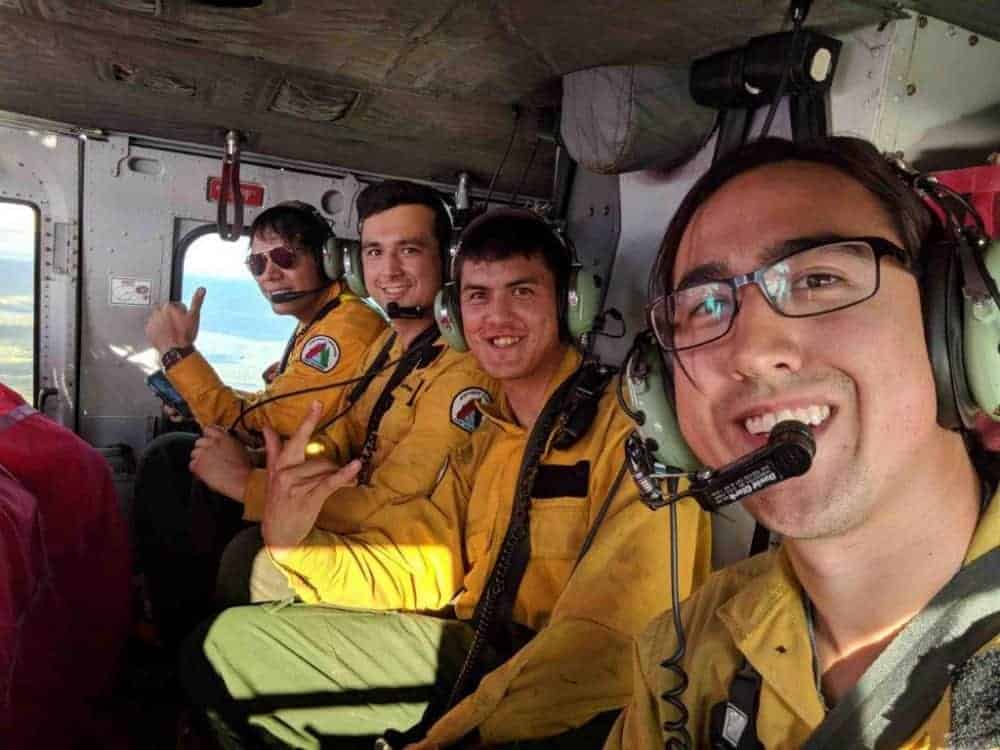Four of Inuvik's forest firefighters lent a hand fighting fires in Ontario this summer.

Photo courtesy of Ernie Francis
Inuvik’s forest officer Ernie Francis and material management officer Chris Laroque also made the trip.
Matthew Lavoie, Jozef Semmler, Keefer Francis and Lance Gray spent two weeks taming a blaze spanning 10,000 hectares around the Ontario towns of Dryden, Kenora and Minaki.
"This summer, it was pretty quiet in the Inuvik region and other places in the Northwest Territories," said Francis. "Ontario had a pretty active season, with some major fires that stretched their resourses a little bit thin, so they needed a bit of help."
The Inuvik crew was part of a 20-person crew from the Northwest Territories that travelled to Ontario to help out alongside approximately 300 other firefighters from Ontario and Saskatchewan.
The forest firefighters, who work for the Government of the Northwest Territories' department of Environment and Natural Resources, are a type one crew, meaning that they are qualified to perform initial attacks and sustained action activities on wildland fires.
Semmler said this expertise was an advantage in the firefighting operation.
"They had to really split up our 20-pack crew, because by the end of it, other crews were timing out," said Semmler. "We were one of the few type one crews on that part of the fire, so they had to spread us out."
More to firefighting than fire
Francis added that there are many variables to consider when it comes to fighting wildland fires.
"It's not only about fighting fire. The logistics are a huge part of it," said Francis. "You have to think about the food, the shelter, weather, different terrain and plants, as well as transportation."

Photo courtesy of Ernie Francis
Francis said that while the crew had to consider these factors, there was an incident management team in place to support and provide necessities to the crews.
Lavoie agreed, saying that there is a lot more that goes into fighting fires than the average person might usually hear or read about in the news when it comes to large forest fire incidents.
"There's so much more than firefighting itself," said Lavoie. "We were camping in tents during thunderstorms, cooking all our lunches and suppers with propane stoves … and we didn't have accommodated showers for about seven days of the trip, so for a while we were all just a bunch of really smelly firefighters."
He said they eventually had a chance to make it into town to wash up and do laundry.
"Overall it was a great experience. We had a lot of fun. Obviously there's always a risk factor involved, but all of the people we worked with made us feel very safe," said Lavoie. "We all worked together very well."